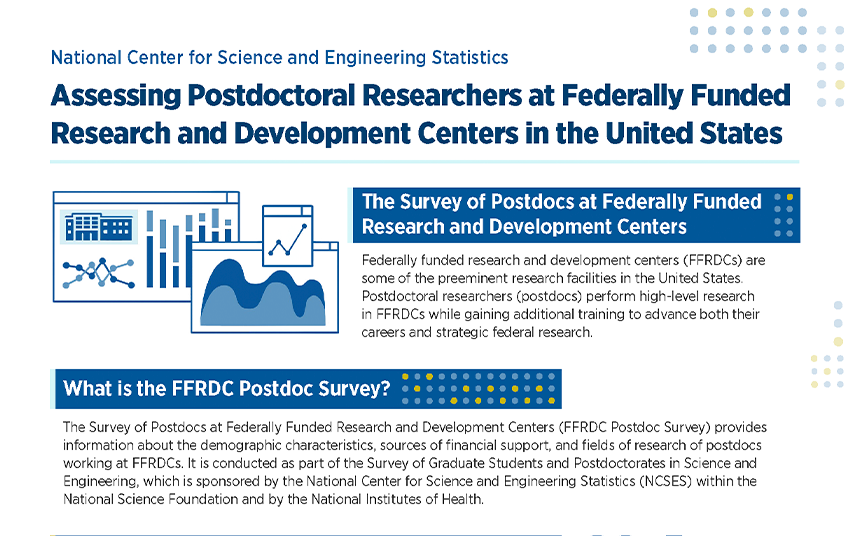Ethnicity. OMB provides guidance to collect Hispanic ethnicity separately from race. In this survey, Hispanic ethnicity refers to whether an individual is of Hispanic or Latino descent.
Federal financial support. Postdoctoral support provided by a federal agency such as the Department of Defense, Department of Energy, National Institutes of Health, or National Science Foundation.
Field of research. The area of which a postdoc’s research was focused. It may or may not be the field in which a postdoc received his or her degree.
Hispanic or Latino ethnicity. Individuals of Cuban, Mexican, Puerto Rican, South or Central American, or other Spanish culture or origin, regardless of race.
Largest source of support. The source of funds that provides the largest amount (highest percentage) of financial support for postdocs.
Nonfederal financial support. Support from state and local government; support from institutions, such as stipends; support from foreign sources, such as foreign governments, foreign firms, and agencies of the United Nations; and support from other U.S. sources, such as support from nonprofit institutions, private industry, and all other nonfederal U.S. sources.
Postdoctoral researchers (postdocs). The definition of a postdoc varies by institution. Respondents were instructed to use their institution’s definition of a postdoc. NCSES defines a postdoc as meeting both of the following qualifications:
- Holds a recent doctoral degree, generally awarded within the past 5 years, such as PhD or equivalent (e.g., ScD or DEng), a first professional degree in a medical or related field (MD, DDS, DO, DVM), or a foreign degree equivalent to a U.S. doctoral degree.
- Has a limited-term appointment, generally no more than 5–7 years, primarily for training in research or scholarship and working under the supervision of a senior scholar in a unit affiliated with the institution.
Temporary visa holders. Individuals in the United States on temporary U.S. resident visas.
U.S. citizens and permanent residents. U.S. citizens, including those from Puerto Rico and the U.S. territories, and permanent residents holding permanent U.S. resident visas (Green Cards).
U.S. territories. American Samoa, Guam, the Federated States of Micronesia, the Northern Mariana Islands, and the U.S. Virgin Islands.
 An official website of the United States government
An official website of the United States government


